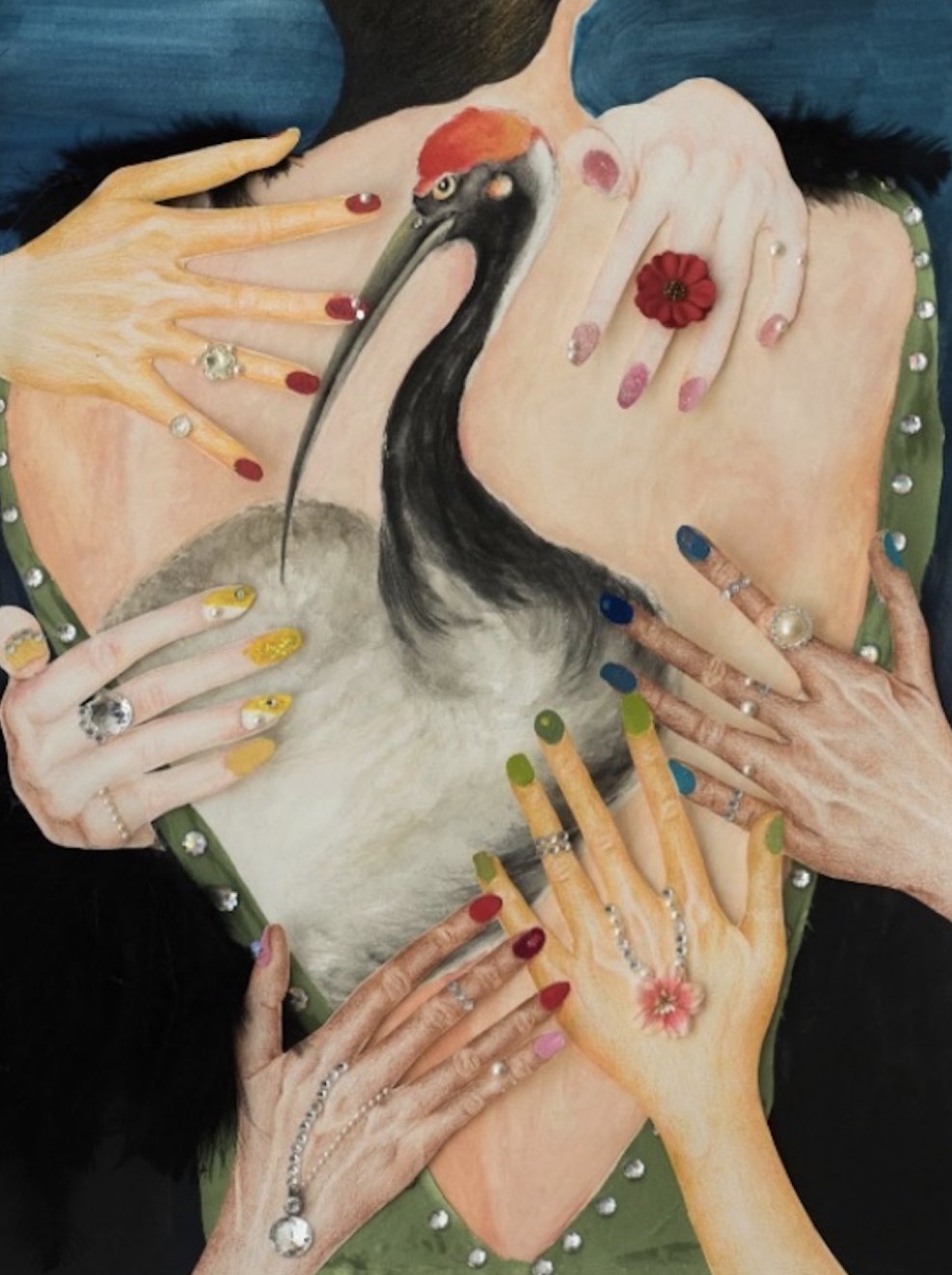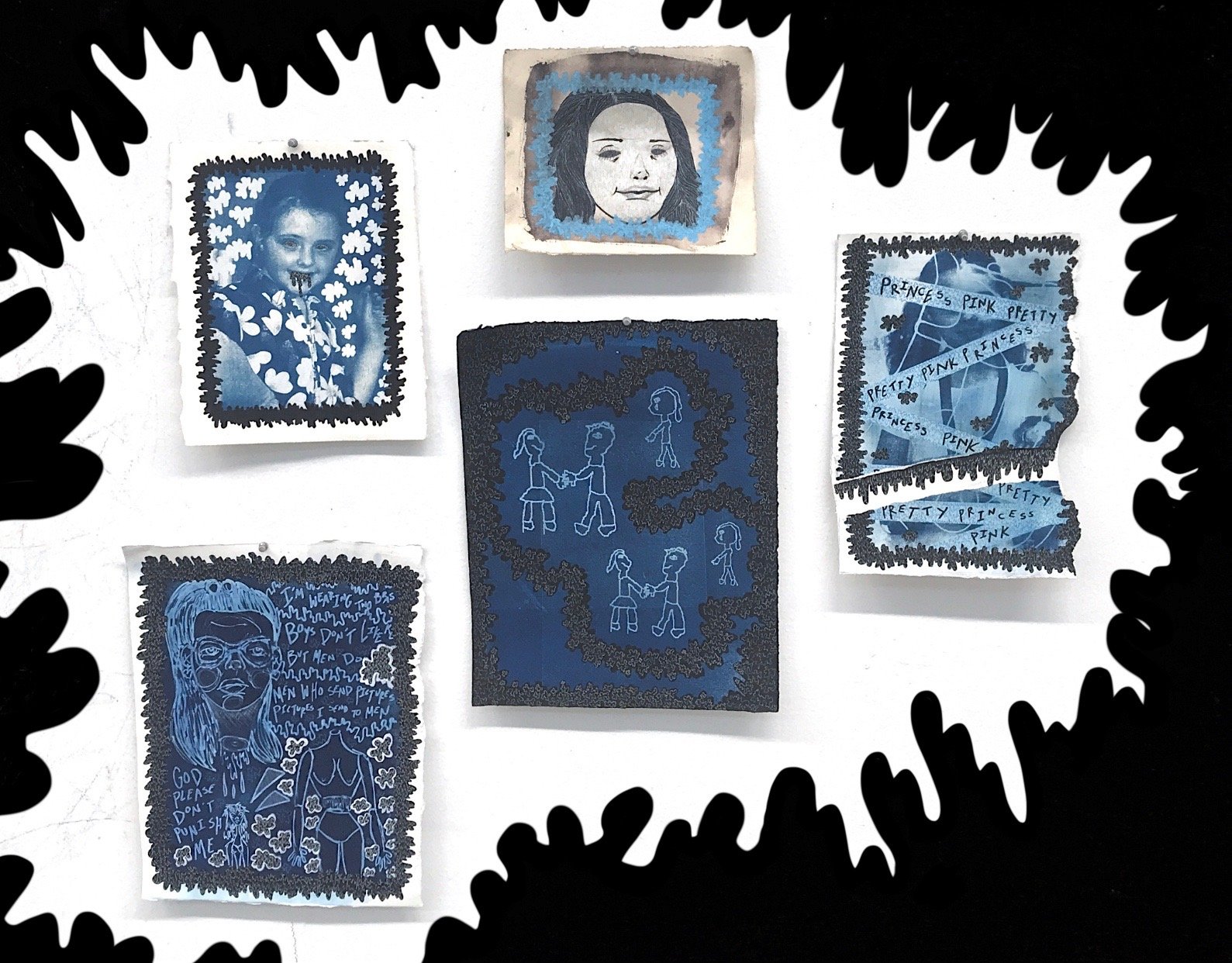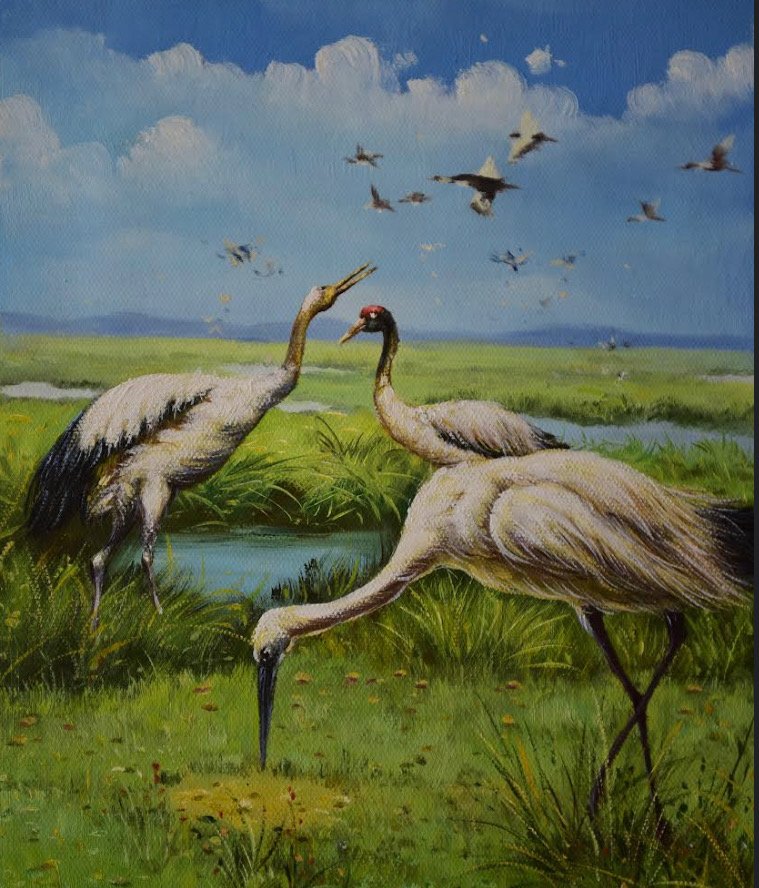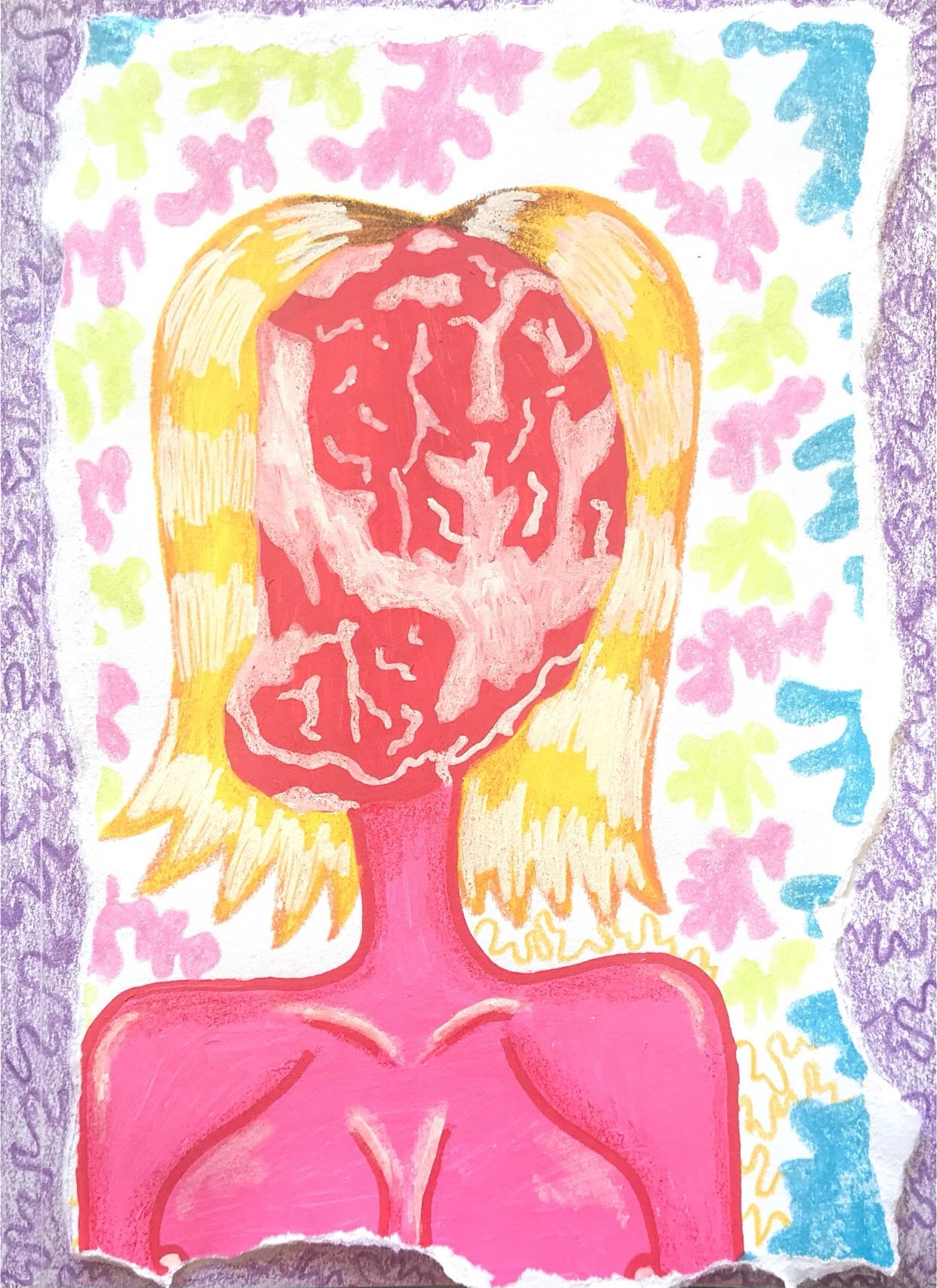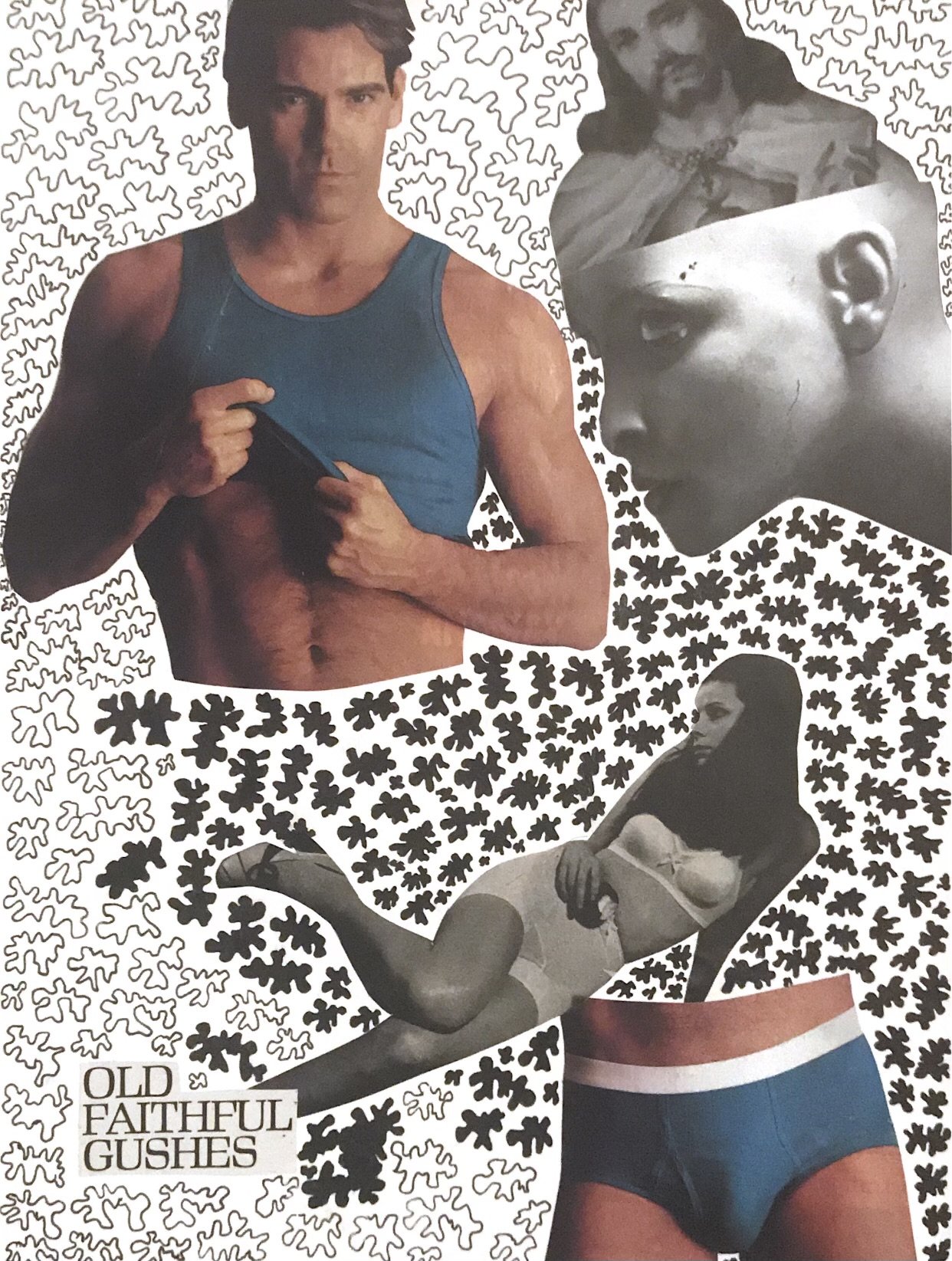The Talk is committed to providing our peers with outlets to express themselves beyond simply writing. Art is the basis of all things creative, and we believe its place in a group dedicated to self-expression is absolutely mandatory when working towards a world of free, open discussion. Explore our page to view the creations of our talented artists!
Things Are What We Make of Them
This one means a lot to me because it represents escapism; while it's very common for people to speak out against the negative effects of social media and technology, one thing that people don't mention enough is the danger of the continuous consumption of media. Escapism is a dangerous form of denial that removes people from their lives. This is titled "Things Are What We Make of Them" and the message is about accepting the positive and negative aspects of life. (Medium: Graphite Pencils)
By: Ethan Wang
The Gift
Growing up, I attended a public school which housed an overwhelming majority of white students. While I myself am white and felt no individual discomfort with this dynamic, many of my early years passed me by void of the developmental impact of diversity. When my parents decided to send me to PDS, I, for the first time, experienced the gift of a diverse community; though my current school is still primarily composed of a white student body, my access to new cultures, groups, and experiences has vastly broadened my worldview in a way I never had the opportunity to in my former life. I made this piece to represent that joy and appreciation discovered within my journey to PDS, while also leaving the structure intentionally simple. Of the many lessons I've learned regarding diversity in high school, one of my most prominent takeaways is that over-correctionalism alienates different cultural groups from one another; instead of merely celebrating our differences while maintaining a gap of identity, we should appreciate what makes us unique while continuing to integrate the greater human experience.
By: Julia McInnes
Careful Collapse
High school, along with life in general, is most often experienced as a sort of balancing act; attempting to maintain one's composure and health while faced with nearly perpetual struggle. The journey through existence is marked with many individual burdens, some uncomprehendingly major, while others soon leave our mental peripheral after inflicting their tiny wounds upon our character. The human experience has in many ways transformed from a battle for survival to a carefully controlled crash-landing, attempting against all odds to hold together the vessels we carry throughout life despite the innumerable cracks that form in our resolve.
By: Julia McInnes
Excessive Mysticisms
A stereotype often conveyed through social media is that the female genitalia is in some way "mysterious" or "complicated", and that, in heterosexual relationships, womens' typically male partners experience difficulties with properly pleasing them. From the inability to find the clitoris to failing to deliver adequate oral sex, female individuals seem to have been dealt the worst hand in regards to their sexual experiences, but why should that be the case? In all honesty, there is nothing confusing about the structure of a vagina. What is confusing is our society's unwillingness to openly educate teenagers on human anatomy, rejecting female pleasure as a whole as "dirty". I made this piece to emulate the female sexual anatomy, demonstrating how truly straightforward it really is, in the hopes of benefitting my generation regarding their potential future with the feminine body.
By: Julia McInnes
The Ideal Woman
This piece is titled "The Ideal Woman", it shows a young girl surrounded by the words “skinny”, “dumb” and “obedient”. The text around her is written like an advertisement, almost like she is being shown off to sell. I wanted to comment on the over sexualization of women to please the male gaze. Her expression is blank and she is clouded with gray spots. She no longer knows what to think of herself. Although she looks beautiful, she is being shown off like an object. I think we need to bring awareness to the harm that is "catering to the male gaze". We tend to ignore the influence that this has on young women. It can pressure them to conform to an unrealistic "ideal" type, cause self esteem issues, and encourage self-objectification. Seeing this in media or being seen in this way can diminish woman’s mentalities on a personal level. Overall, it promotes the idea of woman being seen as objects, that can be modified and sold to whoever wants it. Young women are being influenced by this “male gaze” ideal, and it needs to stop.
By: Anonymous
Dysphoria: I Wish I Couldn't See
This piece titled "Dysphoria: I Wish I Couldn't See" depicts a charcoal drawing of a face covered at the eyes. I drew this to represent my struggles with gender dysphoria. Because of the conflict I have with my identity and my body, sometimes I wish I couldn't "see" the parts of me I don't like. I try my best to hide them with metaphorical masks, like clothes, so I don't "see" them, but it doesn't actually physically change those pieces of me. This drawing was a way of expressing that internal struggle with my own image, because the mask has holes, and I can't always fix or change what I wish I could.
By: Anonymous
Perfect Imperfections
“Perfect Imperfections" depicts a female figure with pubic hair and stretch marks on their thigh. I painted this to highlight the unfair stigma around body hair, stretch marks, and other so called imperfections on womens’ bodies. For me, I see these "imperfections" as perfect, not something to hide. They show a work of art unique to their figure that they should be proud of. And so, when they don’t hide their art, I find that they really shine. Their diverse mural among their skin. It’s always been what I’ve found most attractive in women; when they don’t hide their art.
By: Haley Schragger
On Display
As someone who has struggled with mental health in the past, it really sucks to see it being misrepresented in modern media. Mental illnesses are normally described really generally (they are so dramatic, or they are always violent and angry, etc..) All this false information just erases real people’s experiences. There’s definitely accurate media out there, but very few are well known. Everyone’s experience with mental illness is different. Someone could be be very extroverted, extremely timid, or anything in between. We shouldn’t have this restricted “box” of what it means to struggle. My drawing shows a specific stereotype of someone with depression: tired looking, dirty, messy hair, perhaps bruised, and sad. The hand at the bottom is pulling the person’s face up and showing them to the world. But the truth is, not everyone with depression looks like this, this is just what we have seen primarily portrayed. When asked what depression looks like, I bet most would think of someone crying and cornered in their room. And yes, some are like that. But someone who is struggling inside could also be high functioning, put together, and even cheerful. Sadly, this image is what we as a society have decided mental illness should look like. But in truth, it is so much more complicated.
By: Lily Matthews
Picture-Perfect
Our society has become increasingly obsessed with surface-level traits such as physical beauty, fashion, and expensive accessories, but has seemingly forgotten the importance of what lies beneath our superficial traits. While mental health has become a more popular topic of conversation as of late, we have all shifted away from ignoring mental/emotional issues and moved to the other side of the spectrum; ignoring genuine cries for help amidst the idea that “everyone is mentally ill these days”. The rapid normalization of mental disorders has made them seem meaningless and common, desensitizing us to how serious they truly are. Depicted here is an image of utmost physical beauty captured in a single photo/moment in time, but the individual illustrated simultaneously suffers from a great deal of internal turmoil. People nowadays may be more willing to recognize the existence of mental health issues, but they are similarly ignored and pushed to the side as we all fixate on external traits. Our society is what some would call “picture-perfect”, but a picture can only reveal so much about who we really are inside.
By: Sanjana Thakur
That Which Fades
We all enter this world innocently, bearing no preconceived notions of what may lay ahead, who we may meet, and what we might do. As we move throughout life, however, that innocence and brilliant hopefulness fades when encountering the dark aspects of our society. This is especially true for women, who are often sexualized from a young age. Catcalling and social media are merely two examples through which we may consistently observe the forced maturation of girls (usually in highschool), as they feel the need to “grow up” faster simply to fit in with ideals they’ve been conditioned to value. The candle depicted above represents the aforementioned innocence we carry into life, and, though we may cling to it, the flames of sexualization and abuse eventually consume the wick, the wax melting into nothingness. If we as a society do not act to end this cycle of harm, future generations (especially women), will continue to lose that chance to experience innocent childhoods, their innocence fading before it can even be appreciated.
By: Sanjana Thakur
The Puppeteer
Our world has, in recent years, diversified to include a wide variety of individuals who were once exclusively considered as “outsiders” from “normal society”. America particularly has begun to move past the idea that only straight white men are capable of finding success/acceptance, and, while we still have a long way to go before reaching true equality, it seems society is headed in the right direction. However, while the general public has gained a heightened awareness as to the existence of people who are different from them, we have unfortunately developed an array of stereotypes used to divide us into distinct, separate social groups. Oftentimes, people with identities not included in problematic social norms fall prey to adapting to or embodying said harmful stereotypes in an effort to fit in, puppets to the social pressure surrounding us. A perfect world in regards to diversity would be filled with just that, diversity (and, more particularly, diverse people), meaning all of us would at last be free to exist solely as individuals. Cultures and lifestyles that are currently considered “foreign” or “alt” could be practiced openly, and we could all choose to live as who we truly are without the need (subconscious or otherwise) to conform to stereotypes.
By: Sanjana Thakur
Lipstick
Our world is full of expectations for how women should look, dress, and behave, a prominent symbol of which is lipstick. Over time, lipstick, along with makeup as a whole, has been associated with womens’ fashion and femininity, marking it as something that is inherently “for” women. Aside from the fact that this limits other genders’ access to makeup, it also pressures women into using it in order to fit in. They are held to a higher standard when it comes to physical appearances, and it’s exhausting trying to maintain a certain social image or to “keep up” with others who have access to more expensive cosmetic items. Choosing to avoid such products marks women as outsiders, and one must either force themselves to fit in or miss out socially. At the end of the day, makeup has no gender, and, while we can’t limit others’ access to it, we as a society similarly cannot mandate that any one group of people HAS to wear it.
By: Sanjana Thakur
Intrusive Thoughts
Intrusive thoughts are something that can affect anyone, no matter what mental illness they suffer from. Though they differ from person to person, for me, they come in bursts telling me to do different things. It’s almost like if I look in a mirror, I just want to smash my reflection into pieces until I no longer exist. It’s hard not to listen to this voice in my head, so I express it through art. I draw what I’m feeling when these thoughts are especially intense. Here is an illustration from when my intrusive thoughts filled my brain with self loathing. I just wanted to share part of my experience, and show that you don’t need to listen to that voice in your head. Use these feelings to express yourself, and make something you’re proud of. It doesn’t have to be pretty or perfect. But in my opinion, art is the best medicine.
By: Anonymous
Mahjong Legend in Manhattan
To live in our society is to exist with the expectation that we will look, think, or act a certain way according to a slew of various identifiers we never chose to take on. This sentiment rings especially true for women, who are in many cultures across the world expected to take a more submissive role in social proceedings and activities. And, while some may be content to exist in certain dimensions of more feminine or traditional characteristics, many are not. This piece depicts a woman who acknowledges those expectations, and, regardless of how others will perceive her, actively chooses to move past them and truly express herself. She is drawn in a commanding yet poised position, adopting feminine characteristics while expressing an aura of power and surety; she is far from the timid image of a stereotypical woman some would expect her to be. She partakes in instances of more masculine imagery such as smoking and maintains a degree of social control. Her nails are painted and she chooses to wear makeup, confident that while such things may be socially assigned with weakness or traditional femininity, she is in possession of her own self-expression. Regardless of whether one’s appearance, sexuality, or mannerisms are distinct from what's expected of them, their existence is entirely natural, and should be celebrated.
By: Bolin Shen
Touch
The people of our world so often find themselves divided over disagreements, identifiers, and varied experiences, which often hinders us from coming together to share in the experiences and struggles we may find relatable in our peers. Identifying as a woman within our modern society brings its own monumental range of challenges, but further division amongst women only exacerbates said issues. This piece specifically comments on our society in regards to systems designed to hold women back from their true potential, and, much like how half the population shares this universal struggle, we each also possess the desire to break free and experience what it truly means to be safe in who we are. The image of the bird, a symbol of freedom, imprinted on the woman’s back indicates the integral part of its nature to the female experience, and the range of feminine hands, all varied in their design and detail, united in an embrace of understanding. Now, unity is, more than ever, something we should as individuals strive for in our homes, schools, and communities, and sometimes, said unity is only a touch away.
By: Bolin Shen
Survivalist's Cacophony
I created this piece to represent the constant stresses and concerns of life for modern-day highschool students. We’re so often bombarded by any number of worries that it sometimes feels like we’re going to explode, and, while many of us are able to continue pushing through life, we frequently have moments where it all seems like too much. However, while the being depicted in this image is currently falling victim to the stresses of life, each and every one of us are living, breathing examples of people who keep going despite how hard our circumstances might be. There is always a hopeful future, just so long as we’re willing to survive what’s standing in our way.
By: Julia McInnes
Untitled
This piece are presents the struggle of mental health, for me and for others. For the past year I’ve used art to express my anger and insecurities. For this piece specifically I decided to include the five senses as it relates to mental health issues. When this bowl was first thrown was a perfect circle, just like any ordinary bowl you’d find in your kitchen. But unlike those, I decided to push parts of the face into the inside and add a hand into the middle. Each one of these hand sculpted pieces are one of the five senses, and the middle includes a hand holding an eyeball. I Since I was expressing my mental state through art, this piece represents the constant panic attacks I went through. In the beginning of 2019, I began to fall into depression, and to this day I’m still trying to climb out of it. Worst of all it began to affect people around me, my academics, and my love for art. Painting, drawing, and sculpting is something I’ve been doing since I was a child, but suddenly I had no motivation to do it anymore. It was heartbreaking. My anxiety got worse and worse as time progressed and every time one little thing went wrong I would fall into an inescapable state of panic. It was a constant struggle to get through the day without breaking down. I started therapy and learned how to deal with all these feelings I had. My therapist taught me the “five senses tactic”. Whenever I began to feel out of control, I would list what I could taste, touch, see, smell, and hear. Don’t be mistaken, this wasn’t some magical cure to my problems, but it did help me make progress. As I slowly started to get better, my love for art began to come back. I forced myself to paint or draw or throw and it started to work. I enjoyed my passions again, and I wanted to show everyone that I was getting better. I made this piece to show that even though we struggle, our core will always be there. This perfect bowl was distorted and is now uneven, but it’s still beautiful. I wanted to bring awareness to mental health issues through my experiences, and I could do that through art.
By: Lily Matthews
Untitled
These pieces are all about how girls tend to lose their innocence at an early age from sexualization and about the hunger for male attention that comes with this sexualization. Often times I see young girls who do things for male attention as a way to earn respect or feel worthy of respect. I think the color blue that I used in these pieces represent how truly sad I think that is and represent the grieving of a girl’s childhood/innocence. I mean, this is from my own personal experiences growing up, but I know it has happened to many other little girls. I mourn for these girls’ lost innocence and hope that society will soon let little girls just be normal kids again, without placing such high expectations on and sexualizing them. Girls shouldn’t feel the need for male attention to earn respect either. As a society, we need to do better in this area.
By: Jinx Higgins
Blissful Grazers
This piece was made to represent the freedom of the human spirit (as represented by the birds peacefully existing within a carefree environment, taking to the skies or grazing at their leisure). However, while the scene depicted is peaceful, the work also demonstrates the frail legs and necks of these pure creatures, which stand as representations of the many young girls living within our society that may face corruption or over-sexualization as many women do. While they are at ease in the moment, it is clear their happiness and peace of mind could be ruined at any moment.
By: Bolin Shen
Meat Head
This piece is about how sex workers are treated like meat and how they aren’t given much respect and are just treated as objects. Sex work is work, but people don’t seem to understand that. It’s frustrating to see people consuming media like porn and still refusing to acknowledge that sex workers are actual people and that they’re job is just as worthy of respect as any other.
By: Jinx Higgins
Untitled
This is a series of two prints. One shows the hate that sex workers get and the other tells people that sex work is real work. I chose the sex icon Bettie Page as my subject for these prints because she’s the first person who comes to mind when thinking about sex work. I then added text to emphasize the points I’m trying to make in these pieces. Lastly, I incorporated my signature squiggles and designs into the prints. I’m really proud of these works and I’m glad I get to spread a message that I’m very passionate about through my artwork.
By: Jinx Higgins
Old Faith-ful Gushes
“Old Faith-ful Gushes” is a piece about how religion looks down upon sexuality as this immoral act. It’s terrible how religion makes sex this taboo topic when it’s a natural part of life. It’s important to stop the stigma that religion places on the topic of sex, so that proper education is provided.
By: Jinx Higgins
Cicada Exoskeleton
Our time spent in quarantine has truly been one of self-reflection. However, spending so much time within our own minds has also forced us into a kind of isolation our society was until now completely unfamiliar with. We constructed new walls around ourselves; various barriers which shut out those we love and care for. Recently, I’ve committed myself to breaking down such walls and emerging from my shell, which happened at about the same time as the cicadas burrowed their way out of the ground. While an annoyance, the cicadas brought with them, in my eyes, an era of renewal, and my time spent inside my head, doubting my abilities and appearance, have slowly but surely begun to fade.
By: Aadya Labh
Ms. Universe
In a world where nearly everyone is obsessed with their appearance and the appearances of others, it is becoming increasingly difficult to explore who we truly are, void of physical attributes which others view either negatively or positively. Ms. Universe, a play on the real life beauty contest, portrays a woman liberated from her constraints of objectification, experiencing true beauty amongst the stars. She has left behind the physical realm, and is at last experiencing true bliss, understanding that in the grand scheme of things, our features are entirely irrelevant, made meaningless amidst the trillions of stars and planets all constantly hurtling through space.
By: Julia McInnes
How to Fix a Wilted Flower
This piece represents the struggles of depression and anxiety in the form of a wilted flower. Each sculpture is inspired by the shape of a Peace Lily, which is known to represent prosperity. The irony is that the piece to the far left is wilted, which is so far from success and happiness. It has cuts, bruises, and scars. Each mark left on the clay represents an unhealthy habit of mine that I used to deal with my mental state. But as one looks from left to right, the flower begins to bloom. Some of the cuts are being healed by stitches. The amount of marks on the clay decreases. This is supposed to show that no matter how dark of a state one is in, there is hope. You, just like a Peace Lily, can blossom into a beautiful flower, no matter how wilted you are. In the end, however, no one is perfect. The piece on the very right still has some cuts and bruises on it, but very little. These scars represent the journey, the struggles, and the hard work it took to finally achieve happiness, which is something to be proud of. “How to Fix a Wilted Flower” was a way for me to express my mental health struggles through art. In a way, it was a healthier coping mechanism for me. I wanted to show that no matter how much you struggle with depression, anxiety, or any kind of illness, it is possible to recover.
By: Lily Matthews
RealGirl
This is a piece about the sexualization of girls at an early age. It’s about how girls are often seen as sexual objects and how they’re only seen as a set of parts. It’s also about grooming and the importance of educating young girls about sex and sexual abuse to help them stray away from danger.
By: Jinx Higgins
Breaking
‘Breaking’ is a piece which depicts a woman who appears to be crumbling. Holding her hands to her head, she is trying to keep herself together. In our minds, we tend to crumble and try to hold ourselves together, but the abstraction of this piece indicates that it is okay to free your emotions. By leaving the silhouette of the face one color, but emphasizing the details of the eyes, this portrait expresses sadness. The eyes display no emotion yet they are still; as if they are frozen in time. Confusion can be inferred because in our own lives, feelings can be confusing if we are blinded by anger or by love to the person who is causing us pain. Additionally, our internal struggle to accept ourselves, whether it be about our sexuality, gender, or body, weigh us down. Within the stillness of this work and the lighter strokes flowing down from the eyes, the viewers can identify tears. The drooping angle of the eyelids shows that the figure is discontent. When looking at various facial expressions, when someone is happy, the eyelids and skin around the eyes will have wrinkles accompanied by a slight squint. Contrary to happiness, the eyes in this painting are open and still, as if they are waiting. As if they are numb.
By: Aadya Labh
Blossom Amidst Shadows
The question “How do I feel about my body?” has trailed me throughout most of my life as a young adult. Both external and internal negativity in regards to my appearance have plagued my sense of self-worth and hindered my journey towards acceptance. This piece is representative of my internal struggle with my sense of self, a white, negative dragon warring with my efforts to stay positive and happy.
By: Julia McInnes














